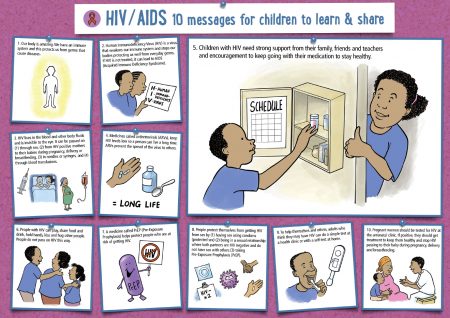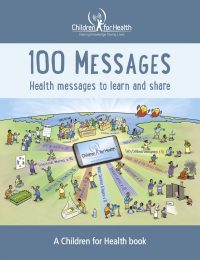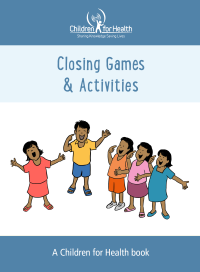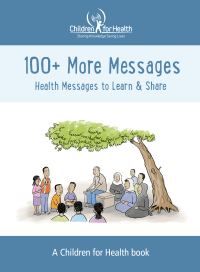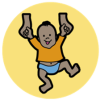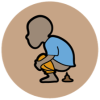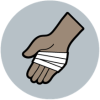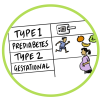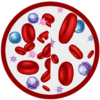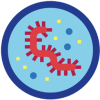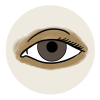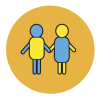HIV & AIDS

In many countries children are deeply affected by the problems caused by HIV and AIDS both directly and indirectly. They are affected by the loss or illness of family members, teachers and health workers. They can be affected by stigma.
Older children can learn and share basic facts about reproductive and sexual health before puberty. Children can discuss and develop skills linked to delaying sex, sexual faithfulness and using condoms. They need a chance to voice their fears and raise questions and for these to be listened to and treated seriously.
Read our Top Ten messages on HIV & AIDS for children to learn and share to the right. Scroll down to see ideas on what children can do to understand, find out more, take action and reflect on this topic.
Use the links below to browse our FREE resources to help children learn more, share their knowledge and become agents of change.
10 Messages on
HIV & AIDS
- Our body is amazing. We have an immune system, and this protects us from germs cause diseases.
- Human Immunodeficiency Virus (HIV) is a virus that weakens our immune system and stops our bodies protecting us well from everyday germs. IF HIV is not treated, it can lead to AIDS (Acquired Immuno Deficiency Syndrome).
- HIV lives in the blood and other bodily fluids and is invisible to the eye. It can be passed on (1) through sex (2) from HIV positive mothers to their babies during pregnancy, delivery or breastfeeding (3) in needles or syringes, and (4) through a blood transfusion.
- Medicines called AntiRetroVirals (ARVs) keep HIV levels low so a person can live a long time. ARVs prevent the spread of the virus to others.
- Children with HIV need strong support from their family, friends and teachers and encouragement to keep going with their medication to stay healthy.
- People with HIV can play, share food and drink, hold hands, kiss and hug other people. People do not pass on the virus this way.
- A medicine called PrEP (Pre-Exposure Prophylaxis) helps protect people who are at risk of getting HIV.
- People protect themselves from getting HIV from sex by (1) having sex using condoms (protected sex) (2) being in a sexual relationship where both partners are HIV negative and do not have sex with others. (3) taking Pre-Exposure Prophylaxis (PrEP).
- To help themselves and others, adults who think they may have HIV can do a simple test at a clinic or with a self-test at home.
- Pregnant women should be tested for HIV at the antenatal clinic. If positive, they should get treatment to keep them healthy and stop HIV passing to their baby during pregnancy, delivery and breastfeeding.
Children can learn, collect & share these messages!
While teaching these messages, encourage children to…
MAKE their own preventing HIV & AIDS Messages using their own words in their own language!
LEARN these messages so they never forget them!
ADD these messages to their collection!
SHARE these messages with other children and their families!
If your class or group is struggling to stay connected and engaged, we have loads of ideas for ideas to help them! Have a look at Closing Games & Activities.
Use the questions/discussion topics below to help children to memorise the messages and really understand them.
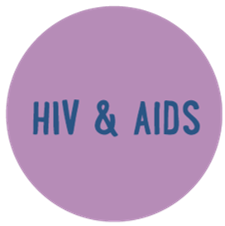

What can children make?
MAKE a quiz to find out what children already know about HIV & AIDS.
START a question box in their class/group for their questions on HIV & AIDS.
MAKE a poster for their school/meeting place about HIV & AIDS.
MAKE a play about Meena and her mum who has HIV and how Meena persuades her mum to go to the clinic to get ART (anti-retroviral therapy) medicine.
START an HIV & AIDS action club to raise awareness in their school and with their families.
What can children do?
COLLECT leaflets and information about HIV & AIDS and share it with their community.
INVITE a health worker to share information and answer questions about HIV & AIDS.
FIND ways to help other children in their community who are affected by AIDS.
PLAY the lifeline game and find out about risky behaviours that could put them in contact with HIV.
PLAY true and false about ways to catch HIV and all the ways HIV can pass from person to person.
LEARN life skills to help them talk about special friendships and sexual feelings.
PLAY the fleet of hope and find out which safe behaviours they could choose to protect themselves from HIV in our special friendships.
THINK of all the difficulties someone with HIV or AIDS has to face and what they can do to help.
ROLE PLAY having HIV to find what it might be like to be someone with HIV.
ASK someone who has HIV to come and talk to them about their experiences.
LISTEN to and discuss stories about people who are living with HIV and the problems they face.
What can children ask?
HOW do immune systems work?
WHAT foods help their immune system stay strong and ready for action?
WHAT is HIV and what is AIDS? What do the letters stand for?
WHAT happens when someone finds out they have HIV?
WHAT happens when someone develops AIDS?
HOW is HIV passed from person to person? How is it not? How can they protect themselves against it?
HOW are people tested and treated for HIV?
HOW can medicines help reduce the risk of mothers passing HIV to their babies?
WHAT other viruses can make us ill?
HOW does ART (anti-retroviral therapy) or PrEP work and when should someone take them?
WHEN and how do their friendships become sexual relationships?
HOW to use a condom correctly?
HOW can they support their friends and family who are living with HIV stay healthy and well?
WHERE is the clinic and what kind of counselling is available for young people?
WHERE is the health centre where someone can get PrEP or ART?
Download these free materials now to help children learn and share these essential health messages. See our free resource section for more!

